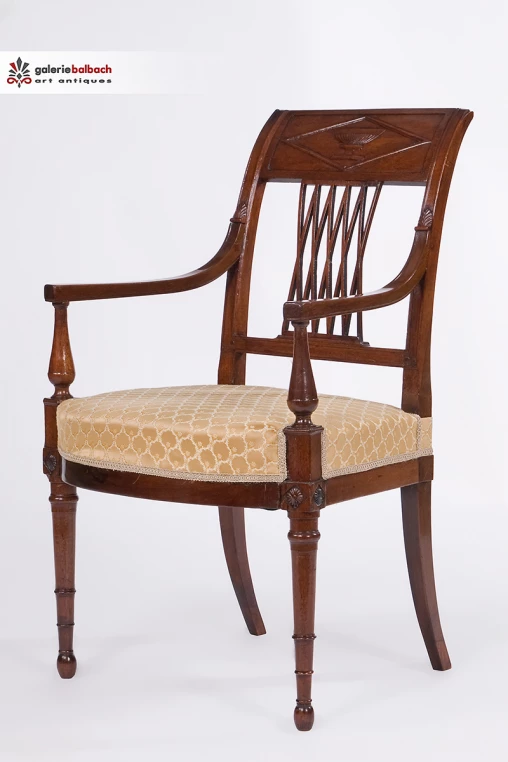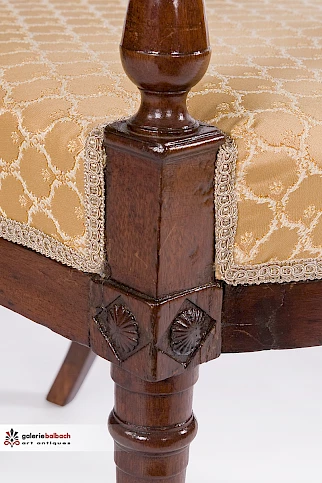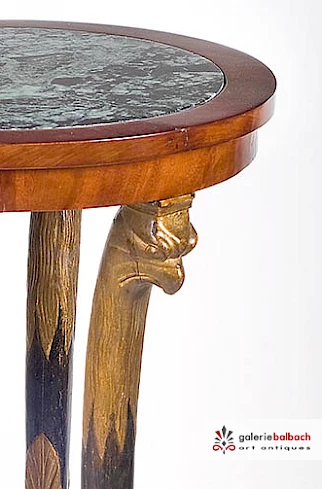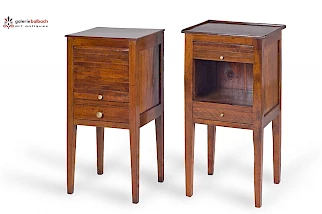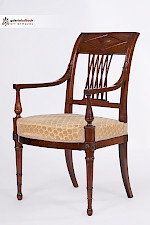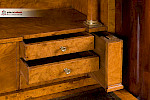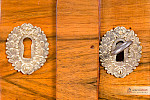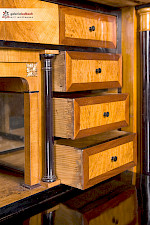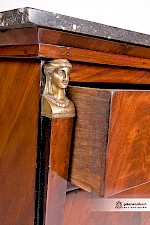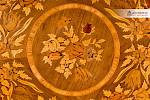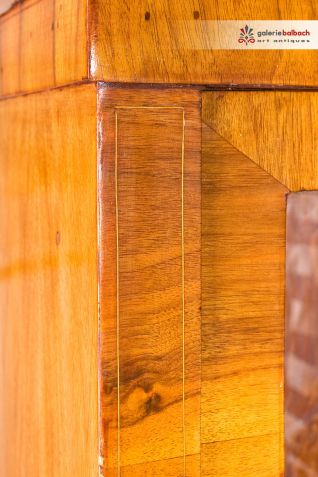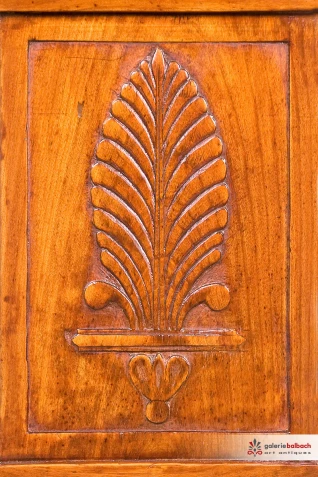Directoire and Consulate
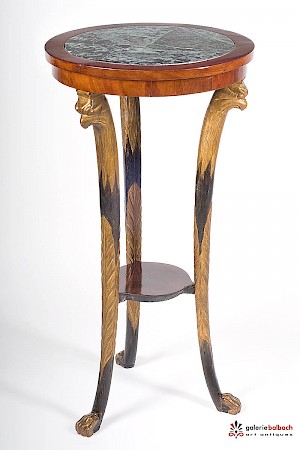 The Directoire (1795-1799) and the Consulate (1799-1804) are the first furniture styles to emerge after the French Revolution, forming a transitional phase from Louis XVI to Empire.
The Directoire (1795-1799) and the Consulate (1799-1804) are the first furniture styles to emerge after the French Revolution, forming a transitional phase from Louis XVI to Empire.
Directoire (1795-1799)
Actually, it could be assumed that from 1789 onwards, furniture would gradually become simpler and less ostentatious - moving towards a bourgeois style - in the spirit of the French Revolution, a move away from courtly and expensive furniture.
Initially, this is also the case: the furniture of the Directoire is mostly made of simple solid woods such as elm, walnut, fruitwood or beech. The ornamentation is restrained, it does not dominate the furniture, the clear geometric lines predominate and the curved forms are gentle. The contours of the furniture are softened by columns and caryatids attached to the corners. Inlays and marquetry are no longer in demand; what holds up are simple thread inlays in light woods such as maple or lemon.
Consulate (1799-1804)
Napoleon's appointment as Consul for life signified a return to pomp and courtly life, reminiscent of the Ancien Régime and heralding the future splendour of the Empire.
The politics of the Consulate brought a period of peace and security to bourgeois society, and to the crafts it brought new opportunities for creativity, detached from aristocratic patrons.
For the art of furniture, the Directoire and Consulate were thus short but important periods. The decorative arts and especially cabinetmaking were able to develop fully again, and those cabinetmakers who had already been held in high esteem under Louis XVI were again commissioned. A transitional style developed which on the one hand still retained the tradition of grace and elegance of the 18th century, but on the other hand also opened itself up to the new, to classicism.
[Source: Adriana Boidi Sassone - Furniture from the 18th Century to Art Deco]
Also interesting
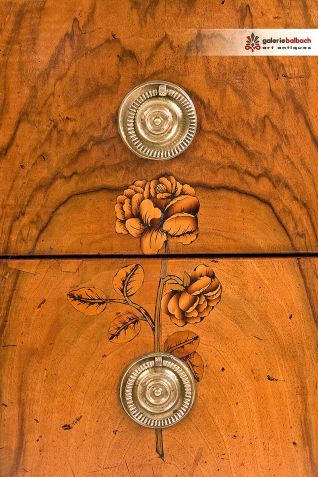
Fireshading
By the term fire shading we mean a burn in the veneer that allows the joiner to achieve a kind of depth effect. [...]Read more
